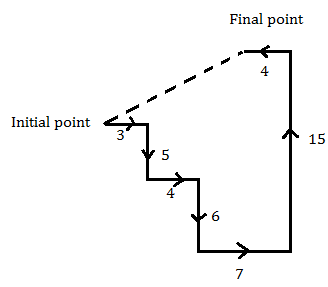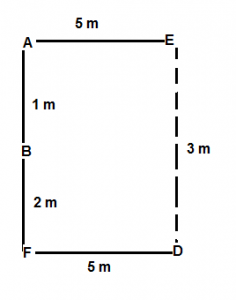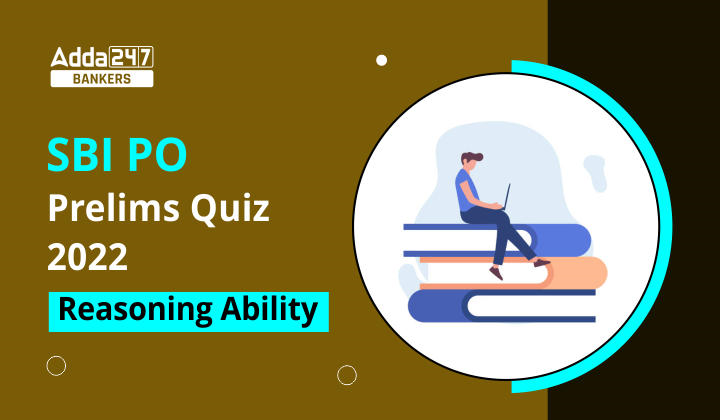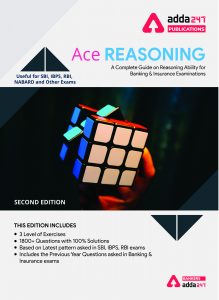Directions (1-3): Study the following information carefully and answer the question given below:
Five boxes are arranged in a horizontal manner. Each box contains different number of bulbs. Box E contains more bulbs than box B. The box which is second lightest contains 11 bulbs. Box A contains more bulbs than box D. Box E contains number of bulbs which is an even number and Box C contains an odd number of bulbs. Box C contains more bulb than box E. Box D does not have least number of bulbs. The box which contains maximum number of bulbs contain 30 bulbs.
Q1. Which of the following box contains maximum number of bulbs?
(a) E
(b) D
(c) B
(d) A
(e) None of these
Q2. What is the possible number of bulbs in box E?
(a) 23
(b) 15
(c) 22
(d) 19
(e) None of these
Q3. Which of the following box contains lowest number of bulbs?
(a) C
(b) B
(c) E
(d) A
(e) D
Q4. In which of the following expression will the expression ‘I≤K’ does not hold true?
(a) I≤G=M≤K≤H
(b) G>J=K≥L≥M=I
(c) M<K=H≥J=I
(d) G≥H=L≥I=K
(e) I≤H=K<G<J
Q5. If the expressions, ‘K<J≤I>H’, ‘I≥G’ and ‘N≥J’ are true then which of the following combinations will be definitely true?
(a) N = I
(b) K < N
(c) G = N
(d) K < H
(e) None of these
Directions (6-10): In these questions, relationship between different elements is show in the statements. The statements are followed by conclusions. Study the conclusions based on the given statements and select the appropriate answer:
Q6. Statements: N > Z ≥ Y = J ≤ K < Q ≤ B, C > Y
Conclusions: I. Y < B
II. C ≥ Q
(a) Both conclusions I and II are true
(b) Either conclusion I or II is true
(c) Only conclusion I is true
(d) Neither conclusions I nor II is true
(e) Only conclusion II is true
Q7. Statements: Z ≥ Y = J ≤ K < Q ≤ B; A ≥ Z
Conclusions: I. A > Q
II. A ≥ J
(a) Both conclusions I and II are true
(b) Only conclusion II is true
(c) Neither conclusion I nor II is true
(d) Either conclusions I or II is true
(e) Only conclusions I is true
Q8. Statements: T < I = Z ≤ H; G < I
Conclusions: I. H > T
II. H > G
(a) Both conclusion I and II are true
(b) Either conclusion I or II is true
(c) Neither conclusion I nor II is true
(d) Only conclusion I is true
(e) Only conclusion II is true
Q9. Statements: F < N < P ≤ R ; W ≥ P; R ≥ X
Conclusions: I. N < X
II. W < F
(a) Only conclusion II is true
(b) Either conclusion I or II is true
(c) Both conclusion I and II are true
(d) Neither conclusion I nor II is true
(e) Only conclusion I is true
Q10. Statements: K = F < S < P ≤ T > M; W ≤ P
Conclusions: I. W ≥ F
II. K > W
(a) Neither conclusion I nor II is true
(b) Both conclusions I and II are true
(c) Only conclusion II is true
(d) Either conclusion I or II is true
(e) Only conclusion I is true
Direction (11-13): Study the following information carefully and answer the given questions.
A person walked for 3km, then took a right turn and walked 5km, then a left turn and walked 4km. and again took a right turn and walked 6km. He then took three consecutive left turns and walked 7 km, 15km and 4 km respectively.
Q11. If the person is now facing west direction, then in which direction did he started walking initially?
(a) North
(b) West
(c) East
(d) South
(e) None of these
Q12. What is the shortest distance between the initial and final point of the person? (Apply the condition given in question number 4).
(a) √41
(b) √29
(c) 3 √43
(d) 2√29
(e) none of these
Q13. In which direction is the final point with respect to the 3rd turning point? (Apply the condition given in question number 4).
(a) North east
(b) North west
(c) South east
(d) South west
(e) None of these
Directions (14-15): Study the following information carefully and answer the questions given below.
A is 1 m to the north of B who is 2 m to the north of F. E is 5 m to the east of A and D is to the southeast of B and is in line with F at a distance of 5 m.
Q14. E is in which direction with respect to D and what is the distance between them?
(a) 5 m, East
(b) 3 m, North
(c) 2 m, South
(d) 2 m, West
(e) None of these
Q15. A is in which direction with respect to D?
(a) Northwest
(b) South
(c) North
(d) Southeast
(e) None of these
Solutions
Solutions (1-3):
Sol. A (30) > C > E > D (11) > B
S1. Ans. (d)
S2. Ans. (c)
S3. Ans. (b)
S4. Ans. (d)
S5. Ans. (b)
S6. Ans. (c)
Sol. I. Y < B (true)
II. C ≥ Q(false)
S7. Ans. (b)
Sol. I. A > Q (false)
II. A ≥ J(true)
S8. Ans. (a)
Sol. I. H > T(true)
II. H > G(true)
S9. Ans. (d)
Sol. I. N < X (false)
II. W < F(false)
S10. Ans. (d)
Sol. I. W ≥ F (false)
II. K > W (false)
Solutions (11-13):
Sol.

S11. Ans. (c)
S12. Ans. (d)
S13. Ans. (a)
Solutions (14-15):
Sol.

S14. Ans. (b)
S15. Ans. (a)





 GA Capsule for SBI Clerk Mains 2025, Dow...
GA Capsule for SBI Clerk Mains 2025, Dow...
 The Hindu Review October 2022: Download ...
The Hindu Review October 2022: Download ...
 IB ACIO 2025 Notification PDF Out for 37...
IB ACIO 2025 Notification PDF Out for 37...


